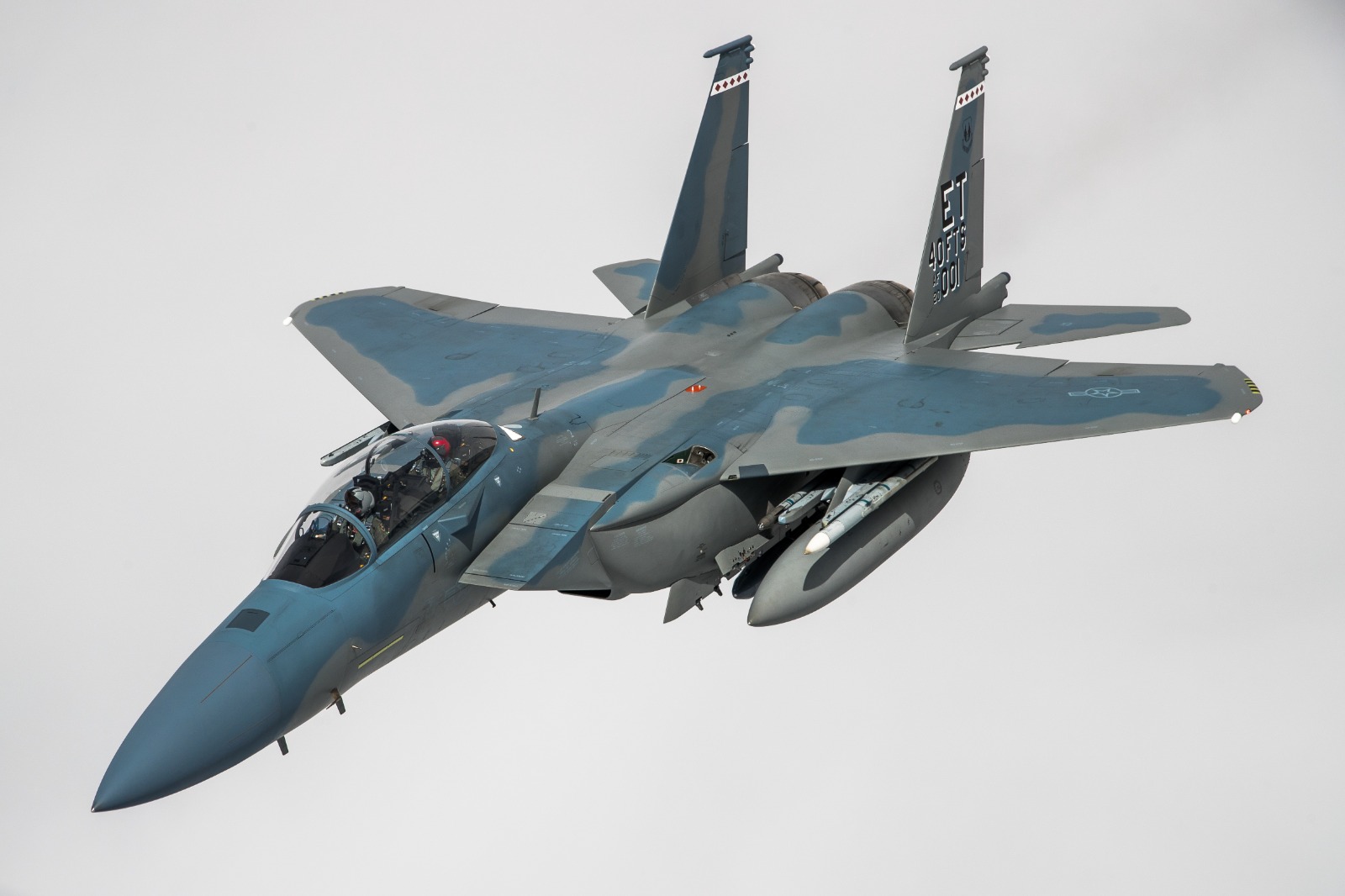The United States is reportedly contemplating the resumption of the permanent deployment of fighter jets at an American base in Okinawa, a year after announcing the commencement of the phased withdrawal of aging F-15 fighter jets from Japan.
In October 2022, the US Pacific Air Forces (PACAF) officially announced the withdrawal of the entire fleet of F-15 C/D aircraft from Kadena Air Base, Japan. The decision at the time quickly raised concerns that such a move might incentivize China to increase its presence in the region.
To bridge the gap until a comprehensive long-term strategy is formulated, the US Air Force started deploying more advanced fighter jets, such as F-22s and F-35s, albeit through a rotational arrangement.
Gen. Kenneth Wilsbach, US Pacific Air Forces commander, confirmed the intention to resume permanent fighter plane deployment. This potential deployment focuses on utilizing the most advanced variant of the F-15, known as the F-15EX Eagle II.
The F-15EX represents a significant advancement over the previous F-15C version. While maintaining identical dimensions to its predecessors, the F-15EX boasts a substantial increase in its firepower-carrying capacity.
However, the potential plan involves deploying fewer fighter jets than before. According to the report, the service aims to deploy 36 F-15EX aircraft, representing a one-quarter reduction from the pre-withdrawal fleet.
Meanwhile, the Air Force official refrained from providing a specific time frame for implementing the plan. Furthermore, Wilsbach dismissed arguments about the diminished tactical value of Kadena, emphasizing its increased importance for a swift response in a crisis.
He highlighted the “agile combat employment philosophy,” which involves dispersing aircraft away from Kadena to execute air operations and avoid missile strikes by relocating swiftly across the western Pacific.
Moreover, as part of the Air Force’s strategy, there is a deliberate effort to broaden access to outposts in the Philippines, Papua New Guinea, and Australia.
This strategic move aims to disperse aircraft and avoid precision strikes from China, signifying a substantial departure from the approach taken in the post-Cold War era.
Deployment Of Next-Generation Drones
Since last year, the United States has faced considerable criticism for its ongoing rotational deployment of fighter jets. Experts argue that this arrangement is giving rise to a vacuum in the availability of fighter planes and, more critically, jeopardizing the perception of a diminished US commitment to the Indo-Pacific region.
However, Gen. Wilsbach suggested addressing the decreasing number of manned fighters by deploying combat corroborative aircraft and next-generation drones.
These unmanned platforms, operating semi-autonomously and taking commands from manned platforms, can complicate the battle space and execute various missions such as strikes, intelligence gathering, jamming, and decoys.
While Wittman acknowledged the positive aspects of combat collaborative aircraft, he cautioned about their delayed mass deployment until the end of the decade, posing a potential risk given the escalating threats in the Pacific theater.
The general also noted that these combat collaborative aircraft would not be relevant to a contingency in the Taiwan Strait in the late 2020s.
Nonetheless, Okinawa Prefecture holds strategic importance due to its proximity to potential geopolitical flashpoints, including Taiwan, a self-ruled democratic island facing increasing pressure from China.
Japan has grown increasingly uneasy about Chinese maritime aggression in recent years, emphasizing a “heightened need” for information gathering as potential adversaries ramp up their activities.

In addition, the US military has recently relocated its reconnaissance drone operations unit to Okinawa Prefecture.
In November, Tokyo confirmed that eight MQ-9 Reaper unmanned aircraft are operational from the US Kadena Air Base in Okinawa Prefecture. Defense Minister Minoru Kihara specified that these drones will remain stationed there “for an indefinite period.”
The relocation of the MQ-9s is part of Washington’s broader efforts to enhance surveillance and intelligence activities near the Nansei island chain, where Beijing’s escalating maritime assertiveness has raised concerns.
This island chain, extending southwest from Kyushu towards Taiwan, encompasses the Japan-controlled Senkaku Islands. These islands have been a source of contention, as China claims territorial rights over them in the East China Sea.
Adding complexity, Chinese coast guard vessels have persistently entered Japanese waters surrounding these uninhabited islets. Nonetheless, the timing of the announcement regarding the permanent deployment of fighter jets by the US at an American base in Okinawa prefecture is still uncertain.
- Contact the author at ashishmichel@gmail.com
- Follow EurAsian Times on Google News




